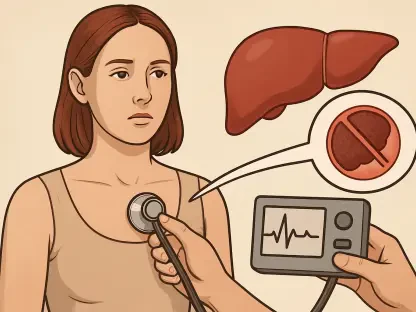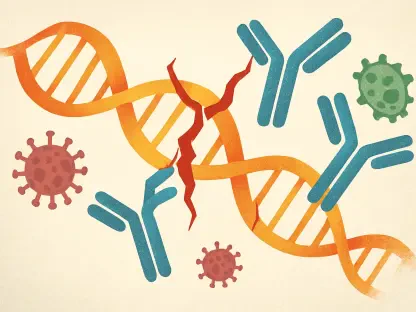Ivan Kairatov is a recognized authority in the biopharma sector, with an extensive background in technological advancements and R&D. In this interview, Ivan shares his insights on the new FDA-approved treatment for IgA nephropathy (IgAN), shedding light on its significance in treating this rare kidney disease, the clinical study findings, and what the future may hold for kidney disease therapies.
Could you provide a brief overview of what immunoglobulin A nephropathy (IgAN) is and how it impacts patients?
IgAN is a chronic kidney disease characterized by the accumulation of IgA antibodies in the kidneys. This buildup damages the filtering units of the kidneys, called glomeruli, leading to increased permeability. Consequently, substances that should remain in the bloodstream, such as protein and blood, leak into the urine. For patients, this can result in hematuria (blood in urine), proteinuria (protein in urine), and over time, declining kidney function, contributing to a substantial risk of kidney failure.
What is proteinuria, and why is it an important factor in the treatment of IgAN?
Proteinuria refers to the presence of an abnormal amount of protein in the urine. It is a critical marker in IgAN because it indicates kidney damage and predicts disease progression. Persistently high proteinuria levels are often associated with a quicker deterioration in kidney function, making reducing proteinuria a primary goal in managing IgAN effectively.
What makes Vanrafia different from other treatments currently available for IgAN?
Vanrafia (atrasentan) stands out primarily due to its mechanism as an endothelin A receptor antagonist. While most treatments for IgAN focus on suppressing the immune response or managing hypertension through renal angiotensin-aldosterone system inhibitors, Vanrafia directly targets the reduction of proteinuria. This unique approach offers an additional layer of protection for patients, potentially slowing disease progression more effectively.
How does Vanrafia work to reduce proteinuria in IgAN patients?
Vanrafia operates by selectively blocking the endothelin A receptors. These receptors play a significant role in mediating the constrictive actions of endothelins on blood vessels and increasing glomerular pressure, which exacerbates protein leakage. By antagonizing these receptors, Vanrafia helps reduce glomerular hypertension and proteinuria, thereby protecting kidney function.
What is the significance of Vanrafia being an endothelin A receptor antagonist?
Endothelin A receptor antagonists like Vanrafia offer a targeted therapeutic approach by specifically addressing the pathogenic mechanisms involved in kidney injury. This specificity reduces the negative effects that result from raised endothelin levels, such as increased glomerular pressure and subsequent proteinuria. The focused action not only alleviates protein leakage but also helps preserve kidney function over time.
Could you elaborate on the results of the ALIGN study that led to the FDA’s approval of Vanrafia?
The ALIGN study provided compelling evidence for Vanrafia’s efficacy in reducing proteinuria. Participants who received Vanrafia, in conjunction with RAS inhibitors, exhibited a significant 36.1% reduction in proteinuria compared to those on placebo. These results underscored the drug’s potential in managing IgAN, particularly in slowing down kidney damage’s progression, an essential factor in the FDA’s decision to grant accelerated approval.
What does a 36.1% reduction in proteinuria mean for the patient’s prognosis?
A 36.1% reduction in proteinuria is substantial because lower proteinuria levels are strongly correlated with slower disease progression and better long-term kidney function. For patients, this reduction translates into a possible decrease in the risk of reaching end-stage kidney disease and the need for dialysis or transplantation, significantly improving their quality of life.
How quickly were positive results observed in the ALIGN study?
Positive outcomes were noticed relatively quickly, with significant reductions in proteinuria observed as early as week six. This rapid onset of effect is crucial for early intervention, potentially altering the disease course before significant irreversible kidney damage occurs.
What are the next steps for the ALIGN study, and why is continued approval contingent on these steps?
The continuation of the ALIGN study focuses on verifying the long-term clinical benefits of Vanrafia, particularly its effect on slowing disease progression as measured by an estimated glomerular filtration rate (eGFR). The results at week 136 will determine if the early proteinuria reduction correlates with sustained kidney function preservation. Continued FDA approval depends on these findings to ensure the drug delivers on its promise of long-term benefit.
Who are the ideal candidates for treatment with Vanrafia?
Ideal candidates for Vanrafia are adult patients with primary IgAN who exhibit persistent proteinuria despite standard treatments and are at risk of rapid disease progression. These individuals can potentially gain the most from the targeted approach of this drug.
How will Vanrafia be integrated into existing treatment plans?
Vanrafia can be added to a patient’s existing regimen, which often includes supportive care with a renin-angiotensin system (RAS) inhibitor and possibly a sodium-glucose co-transporter-2 (SGLT2) inhibitor. This integration allows for a comprehensive approach to managing IgAN, addressing multiple aspects of the disease simultaneously to optimize treatment outcomes.
Considering the risks of IgAN progressing to kidney failure, how significant is this new treatment option?
Given that up to half of IgAN patients with persistent proteinuria progress to kidney failure within two decades, Vanrafia’s approval is highly significant. It provides an advanced therapeutic strategy that may alter the trajectory of the disease, offering hope for delaying or preventing kidney failure in patients who are at a high risk of deterioration.
What does accelerated approval by the FDA entail and why was Vanrafia granted this status?
Accelerated approval allows the FDA to approve drugs that address unmet medical needs for serious conditions based on preliminary evidence suggesting clinical benefit. Vanrafia was granted this status due to its significant impact on reducing proteinuria in IgAN patients, a substantial step forward given the current limitations in treating this rare disease.
What other rare kidney diseases might benefit from treatments similar to Vanrafia?
Other rare kidney diseases, such as focal segmental glomerulosclerosis (FSGS) and membranous nephropathy, could potentially benefit from treatments like Vanrafia. These conditions also involve glomerular injury and proteinuria, suggesting that endothelin A receptor antagonists might offer a promising therapeutic avenue.
How does the approval of Fabhalta relate to the development and approval of Vanrafia for IgAN?
The approval of Fabhalta, another innovative treatment for kidney diseases, underscores Novartis’ commitment to addressing rare and underserved renal conditions. Fabhalta’s success provided a foundation for accelerating Vanrafia’s development, highlighting the company’s strategic focus on expanding treatment options in nephrology.
What future developments can we expect from Novartis in the area of kidney disease treatments?
Looking ahead, Novartis is likely to continue its innovative efforts in developing targeted therapies for various kidney diseases. Future advancements may involve combinations of novel drugs, enhanced diagnostic tools, and patient-specific treatment plans to further improve outcomes for those suffering from complex renal conditions.
What is your forecast for kidney disease treatments?
The future of kidney disease treatments appears promising, with advancements leaning towards personalized medicine, where therapies are tailored to the genetic and molecular profiles of individuals. We can expect to see more precision-based treatments, improved early detection methods, and potentially, the use of regenerative medicine techniques to restore kidney function. Such innovations hold the potential to transform the prognosis of kidney disease significantly.









